Lapdock or DIY: overview of smartphone based mobile computing solutions
Mar 18, 2024 | mtxvp
Last updated: 2024-03-24
Niche computers
It's hard to imagine anyone these day not carrying around a smartphone. A couple years old, semi-decent, unlocked Android phone will set you back $500, and goes up from there. For about the same price you can also get an entry level laptop. Want more modern devices? Double or triple the prices for both.
Android 10 Android phones supports "Desktop Mode", and some manufacturers also have their own implementation of it like Samsung DeX or Moto Connect.
Naturally a question comes up: why not use your phone as a laptop? Would it make things lighter, allowing to carry around less devices? Lets consider few points when comparing the "phone as a laptop" setup, as compared to "phone + laptop" solution:
Pros:
- Don't have to install two copies of the software that you use
- No need to synchronize your files between two devices
- When you are on the road, no need to search for wifi or tether laptop to your phone
- Hopefully you can save some $$, because you going to have a single compute device instead of two
Cons:
- User experience is not as polished on Android, compared to native OS like Windows or MacOS. In fact, it may take some tinkering to get things working on Android to resemble a laptop like experience.
- Responsiveness can be a bit slower
- Connecting your phone to an external monitor and battery may feel like more cables than a backstage rock concert, especially if in a hurry 🎸
- The weight of your carryon does not decrease that much. Two heaviest components, namely screen and battery are still there, chilling like heavyweight champions.
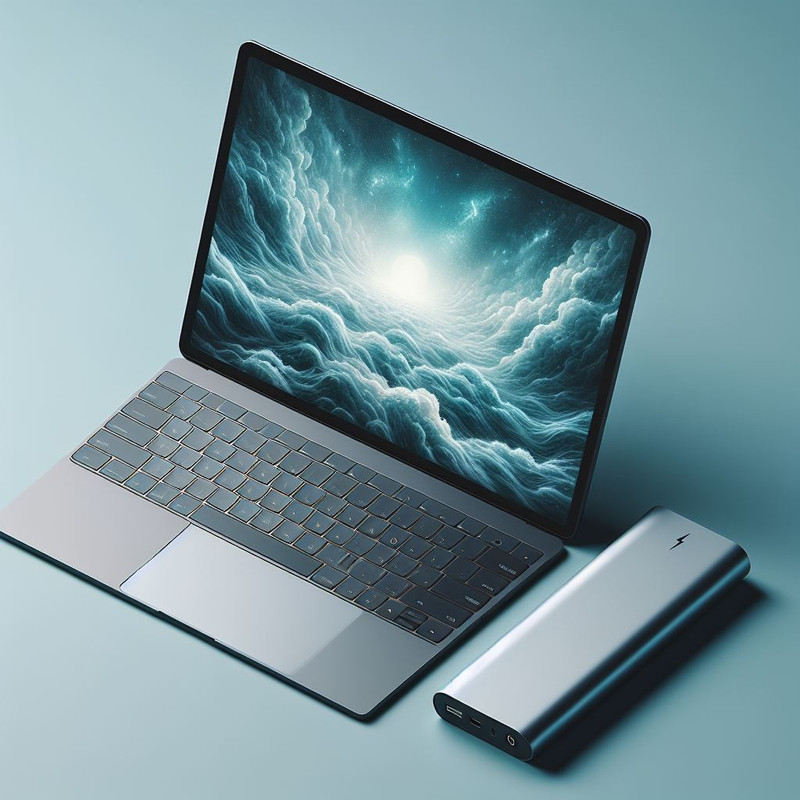
Alright, so you are past the Cons above and still want to embrace the quirky charm of your phone-laptop hybrid? Below we'll review 2 different ways to do just that.
Lapdocks
Lapdocks are like dummy laptop shells, without CPU. The biggest benefit of the lapdock is that everything is integrated in a single case, so you can just open it, connect to your phone with a single cable (or even wirelessly) and get going almost instantly.
Palm was way ahead of it's time, when they tried to release a Palm Foleo in 2007, a subnotebook that was intended to wirelessly connect to a Palm Treo smartphone. It was cancelled couple months after the announcement.

Source(s): Wikimedia
Early "true shell" lapdockes start showing up around 2011. One that could be used with Motorola ATRIX 4G, an Android-based smartphone developed by Motorola. Using Webtop custom software it was possible to connect the phone to an optional Laptop Dock accessory.


Source(s): Wikimedia and Internet Archive
Clambook was a lapdock from 2012 supporting both with Android and iPhone.

Source(s): Internet Archive
Another attempt from around 2016 was HP Elite x3, a premium Windows 10 Mobile smartphone produced by Hewlett-Packard. HP Elite x3 Lap Dock was an accessory, allowing to provide laptop like experience
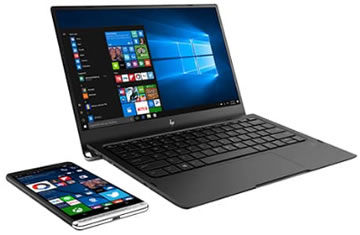
Source(s): HP Support
In 2016 Andromium/Sentio startup went through a successful Kickstarter campaign, only to disappear into oblivion around 2019.

Source(s): Internet Archive
The list goes on. There are (were?): LEEF, Casetop and so on.
Few of the lapdock currently available on the market are:
-
Nextdock Wireless: US$299.00
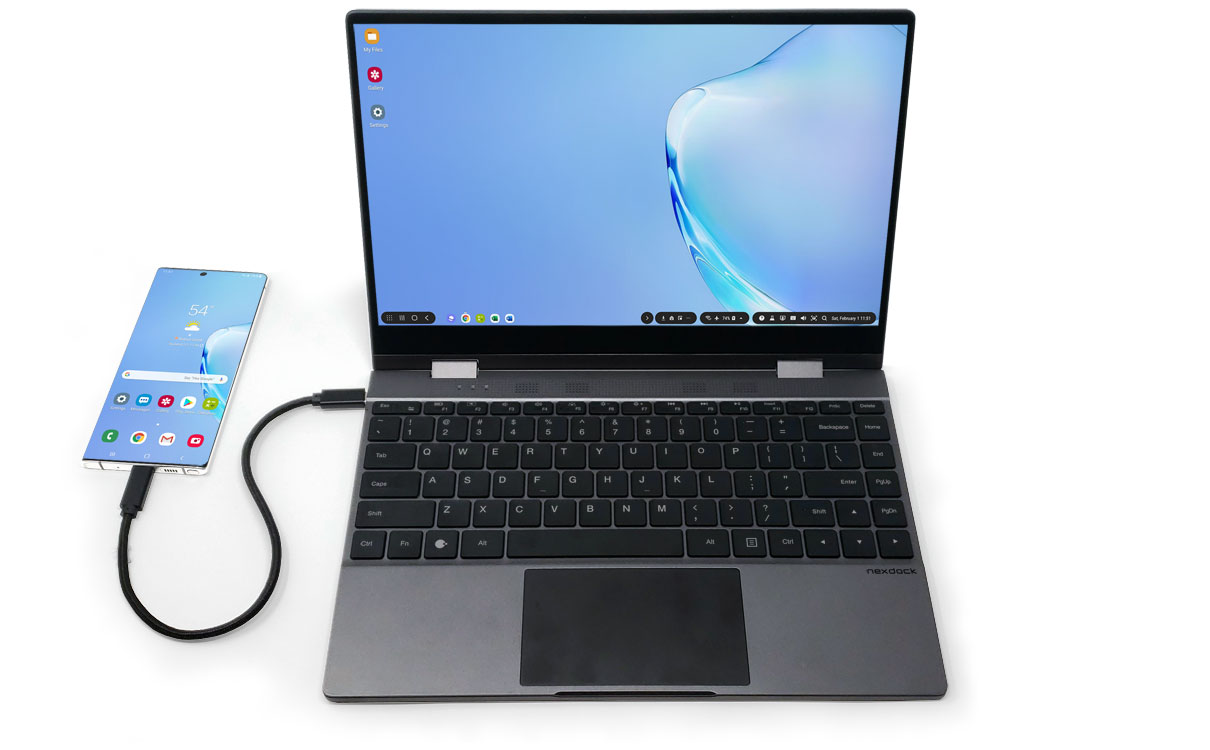
Source(s): nexdock.com -
Uperfect X: US$319.99
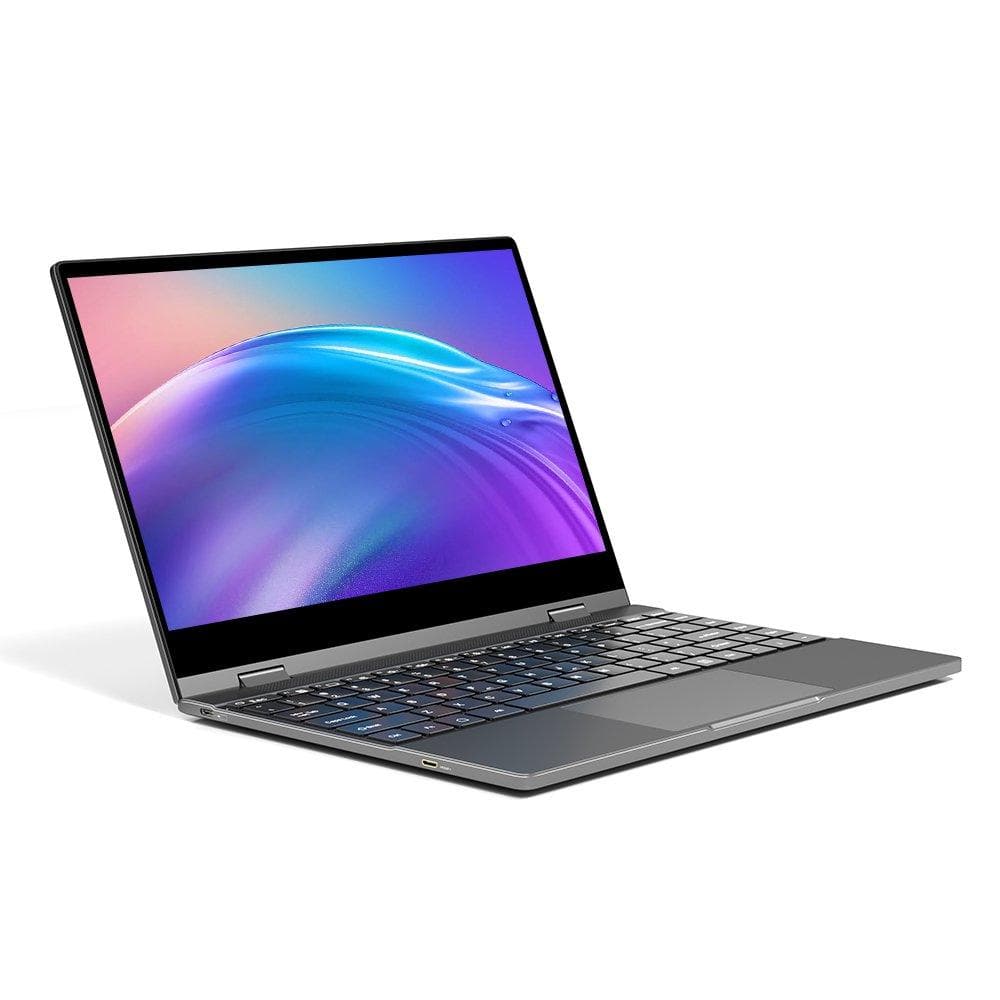
Source(s): uperfectmonitor.com -
Miraxess MiraBook for US$499.00
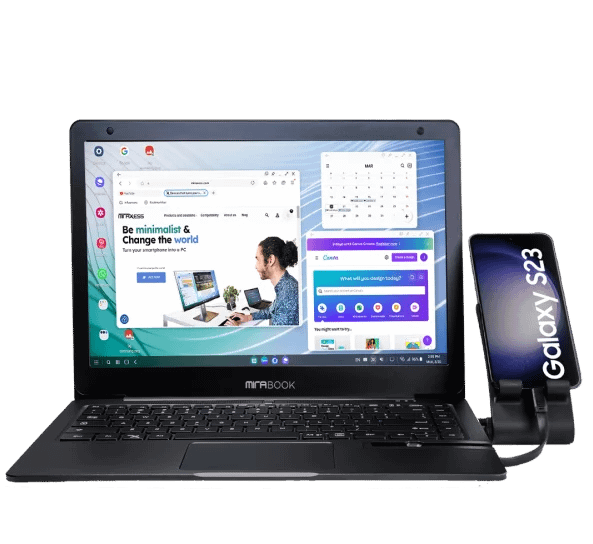
Source(s): miraxess.com
All share very similar specs, allowing you to connect your phone via USB-C cable, with 13.3'' IPS Touch screen, aluminium body and built in battery (4500 mAh or larger).
People also claim being able to use their tablets or chromebooks as lapdocks. Professionals can also consider LCD KVM Consoles, but that is a completely different ballgame in terms of portability and price.
DIY solution
Let’s embark on a quest to transform your humble Android phone 📱 into a swanky laptop 💻! 🌟
If you are like me, having few of the components already available at your home office, you can also consider putting together your own solution. Most likely you will have USB-C portable monitor that you use with your laptop, as well as a powerbank to charge your phone on the go. If so, then all you need is couple more cables, Bluetooth keyboard with touchpad and you are in business.
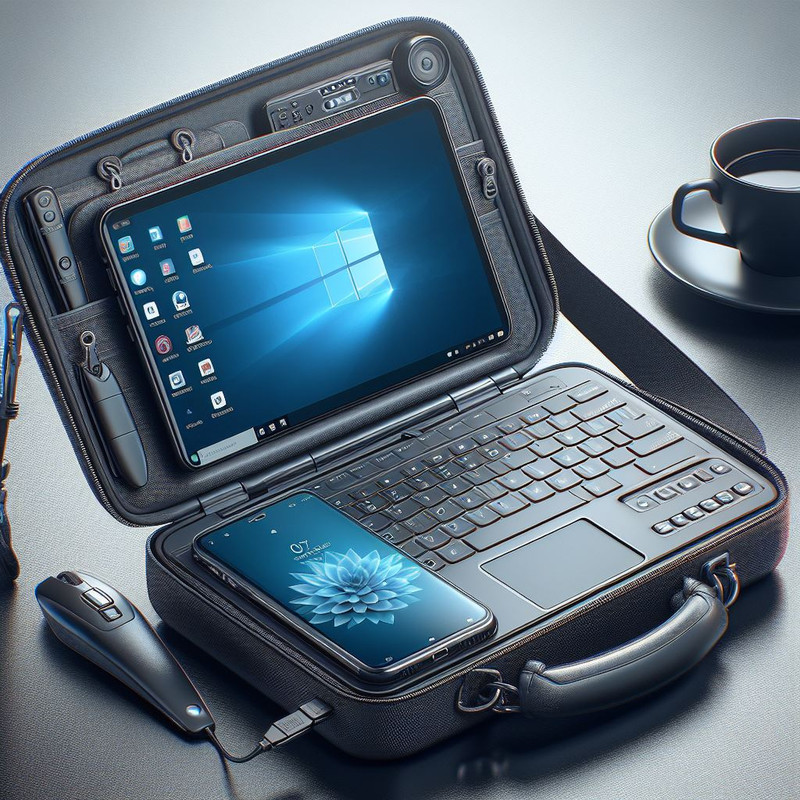
Here is the full list:
- Samsung DeX compatible phone
- Setup will likely work with other Android phones, but tested only on DeX for now.
- USB-C portable monitor: lots of options available at your preferred retailer
- Bluetooth keyboard with touchpad: because typing on a touchscreen is so 2010
- USB-C to USB-C Video cable: This little cable is the centerpience of your setup. Without video support, DeX won’t activate. So choose wisely, my friend.
- USB-C to USB-C cable for power: Bonus points if both ends have a 90-degree angle.
- Power bank: 10,000 mAh+ will provide you with few hours of uninterrupted work.
- Note: Note: High-capacity power banks need chargers with muscles (60W+). Regular phone charger won't charge them. Can also use MacBook or similar charger with USB-C output.
- Pro tip: If you are working (as a passenger) from a car, you can temporarily do away with powering your setup from an available USB port in the car, allowing to save your power bank charge.
- Clamshell laptop bag: to hold it all together like a cosmic force field. Without it, your devices would be like rebellious teenagers — floating around, causing chaos, and falling behind your shaky car seat.
Assuming you already have a phone, the price tag of this gadget salad (Drumroll, Please) will set you back about CAD$427 with tax (~USD$315):
- USB-C portable monitor: $192
- Clamshell laptop bag: $84
- 20,000mAh PowerBank: $68
- Bluetooth Keyboard: $48
- USB-C to USB-C Video cable: $25
- USB-C to USB-C cable: $10
Here you can save some $$$ by reusing existing parts or scouting secondhand treasures.
Software and setup
If you got to this point, you are likely planning to use this for more than simple web browsing. First thing you'd want to do is to setup Termux. Best option is to get it from F-Droid, rather than usual Android App Store, as the version there will be fresher.
Out of all free editors I tried so far I am heaviliy biased towards Visual Studio Code terms of usability for multi-tab text editing, simple development and compatibility on other desktops. You can install one directly from inside Termux. I found it a bit flaky to use, and the biggest gap there for me was absence of integrated terminal. Once I built my own (link with instructions pending), things got much better.
Other DIY Solutions
Broken smartphone to working laptop transformation - Sleek aluminium DIY solution